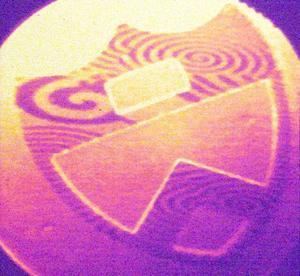
Scientific computation for complex/multiscale systems modeling. Our group has established a systematic connection (which we call "equation-free" computation) between macroscopic, continuum numerical analysis and microscopic/atomistic/stochastic simulators (such as molecular dynamics, kinetic Monte Carlo, Brownian dynamics or agent-based simulators). Our framework circumvents the derivation of closed, macroscopic equations, and allows microscopic simulators to perform systems-level tasks directly. Applications range from the long-time dynamics and thermodynamics of peptide fragments to complex fluids (liquid crystal rheology, micelle formation), computational materials science, lattice gas models of surface reactions, chemotaxis, epidemiology and more. Beyond direct simulation, the approach can be used to accelerate tasks such as parametric/stability analysis, optimization and controller design. This work involves extensive collaboration with experts in the particular fields, many of them here at Princeton.
Process dynamics, computer modeling, and applied mathematics. Research in my group is aimed at studying the dynamic behavior of reaction and transport processes. Using the computer as a research tool, we try to develop a fundamental understanding of the time-dependent behavior of phenomena such as instabilities and oscillations in the dynamics of chemical reactors, as well as transitions to turbulence and pattern formation in fluid flow. High-performance computing and advances in numerical analysis allow us to study such problems in a systematic fashion, often based on first principles rather than phenomenological correlations. The numerical methods and algorithms developed for the study of time-dependent phenomena in chemical engineering can also be applied to many other systems of engineering interest.
Spatiotemporal pattern formation. This work addresses the formation of spatiotemporal patterns in heterogeneous catalytic reactions. In collaboration with the Fritz-Haber-Institut in Berlin, we have developed new types of microcomposite catalytic surfaces using microelectronic fabrication techniques, like lithography. We use both experiments and numerical simulation to study the effect of the geometry and composition of these catalysts on the dynamics and instabilities of the catalytic reactions occurring on them. Recently we have constructed addressable catalysts, using resolved sensing and actuation in space and time. We are now exploring spatiotemporal operation protocols that optimize reactor performance in open as well as in closed loop.
Nonlinear system identification and control. Chemical process control has traditionally been based on linear or linearized system models. Signal processing of experimental time series from a process allows us to extract nonlinear, low-dimensional, accurate dynamic models, which can be used for prediction, characterization, and eventually control of the process. We use techniques based on nonlinear system identification to facilitate controller design of spatiotemporally varying processes. In parallel, we are studying the dynamics of adaptively controlled systems, which are inherently nonlinear. Our goal is to combine the two sides of the research-system identification with model reduction, and adaptive control-for use in cases where fundamental models are either unavailable or too inaccurate for real-time use. Recently, this activity connected with our multiscale work (coarse control of microscopic/stochastic processes) as well as with our pattern formation work (control with very finely resolved spatiotemporal sensing and actuation).

